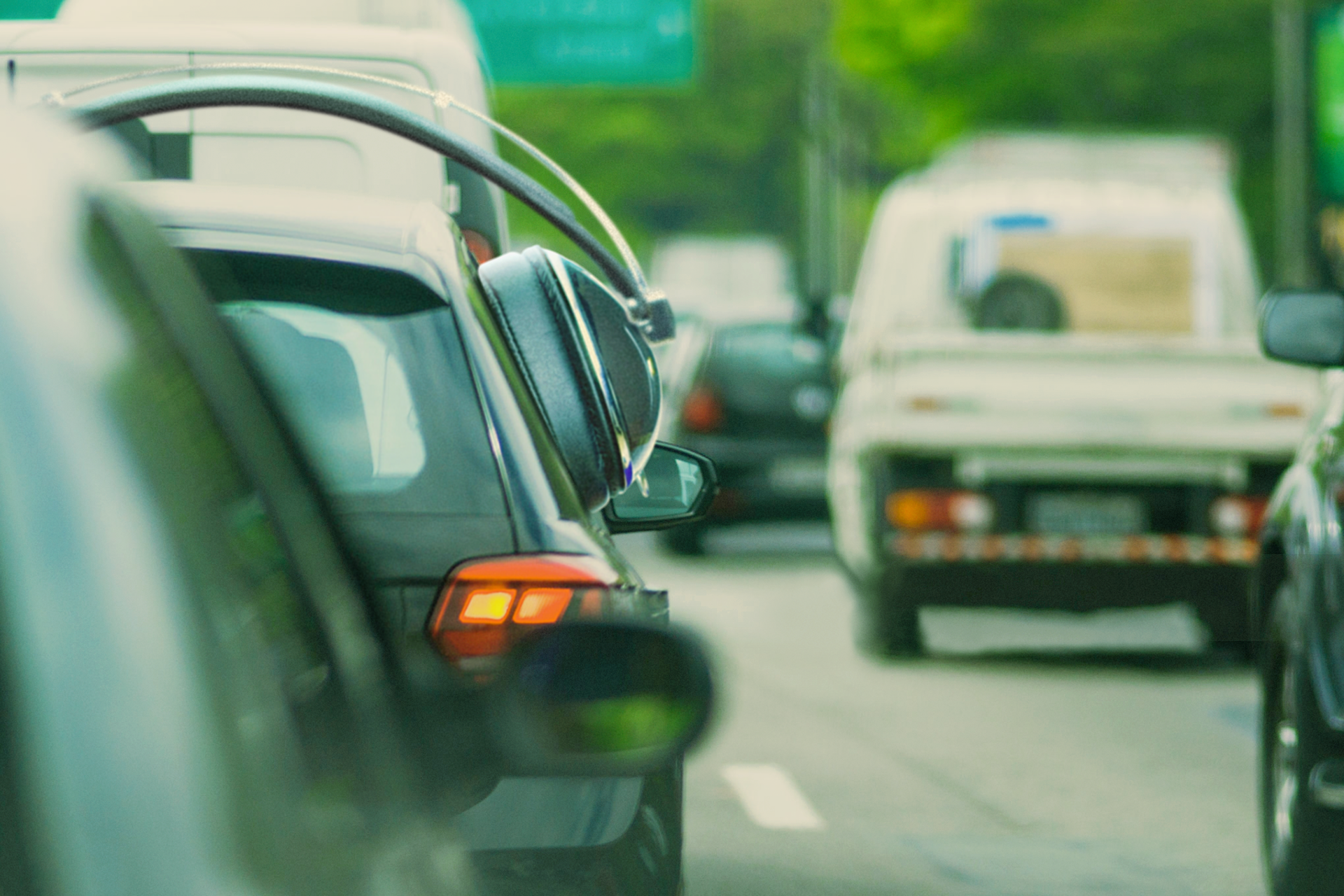Music and the brain: achieving a flow state while driving
July 15, 2021
Finger drumming on your steering wheel. Tapping your foot on the car floor to the beat. Belting out to your favorite tunes with the windows down. Or, humming it because you don’t know the words.
These are all signs of a great driving playlist. And while you are your car’s own personalized DJ, when you queue up your songs (because a distraction-free driving life is a good life), have you stopped to think about how your favorite songs are playing a role in your driving—neurologically?
Let’s dive into the relationship between music and the brain, and how playing the
right music while driving can help you reach a flow state of mind.What exactly is a flow state of mind?
Have the words, “I’m in the zone”, crossed your mind before? There’s a reason for that. According to
Headspace, a flow state is essentially that moment in time where you are entirely focused on something beyond the point of distraction.Flow state of mind is the feeling where there is a lost sense of time and you are fully immersed in what you are doing.
The goal of flow state while driving is being as focused and free from distractions as possible. The tricky part is remembering that the very act of finding that focus can also be a distraction. For example, excessively loud music can impact driving performance.
In a TEDx Talks presentation, Musician Diane Allen describes flow state as an experience of feeling our best, and performing at our best. She attributes flow state as her reason for overcoming obstacles and finding fulfillment in her work.
But how do you achieve flow? Is it sitting around, waiting for it to happen?
While we wish it were as easy as switching the lights on and off in a room, it takes some time to set the stage for a successful “in the zone” session. So how can you do it? Here are some tips on how to reach flow state on the road:
Avoid interruptions while driving—like reading a text from your best friend
Listen to the right kind of music (more on this below)
Engage in tasks you’ve already practiced—like driving to work
With different paths to flow, there’s no one-size-fits-all approach. Try new things, write down what does or doesn’t work for you.
The neuroscience of a flow state
Now that the stage has been set for achieving flow state, what’s going on behind the scenes? Let’s get a little scientific here—but make it fun. Like a blog version of The Magic School Bus.
Flow states are meant to help us reach our peak in performance. Research has shown that the brain actively changes during flow states. It has been suggested that there is also an increase in activity of dopamine (the “feel-good” hormone) when people experience flow.
Allen reinforces this statement saying, “Neuroscientists have discovered that in these moments, hormones are released, creating brain waves conducive to the flow state. The neocortex amps up dramatically increasing learning speed, and the prefrontal cortex temporarily shuts down. And this is why we lose a sense of ourselves, and a sense of time: key indicators that we are in the flow state.”
The relationship between music and the brain
How exactly does this relate to the music you listen to in the car? Your driving playlist has an impact on the connection between music and flow state of mind, and with the right playlist it’s possible to achieve a flow state while driving—leading to more focus on the road.
Before we dive into the playlist you listen to in the car, let’s talk about music and neuroscience.
The effects of music on the brain
At the University of Central Florida (UCF), neuroscientist Kiminobu Sugaya and world-renowned violinist Ayako Yonetani have been teaching Music and the Brain, a course designed to explore the relationship music has on the brain.
Both Yonetani and Sugaya explain how music can affect each part of the brain. For example, as we listen to music, the temporal lobe processes what we hear. He explains, “We use the language center to appreciate music, which spans both sides of the brain, though language and words are interpreted in the left hemisphere while music and sounds are interpreted in the right hemisphere,” Yonetani says.
Listening to music has shown to reduce anxiety, blood pressure, and pain as well as improve sleep quality, mood, mental alertness and memory.
“Music is structural, mathematical and architectural. It’s based on relationships between one note and the next. You may not be aware of it, but your brain has to do a lot of computing to make sense of it.”
Knowing the benefits and the science of music and the brain can now help you understand why having the right music playing in the car can help you achieve a flow state.
The power of music on the brain
Your car is the perfect place to reach a flow state. Why?
In the book, Finding Flow: the Psychology of Engagement with Everyday Life by Mihaly Csikszentmihalhi, he explains, “For many people, driving a car gives the most consistent sense of freedom and control; they call it their ‘thinking machine’ because while driving they can concentrate on their problems without interruptions, and resolve emotional conflicts in the protective cocoon of their personal vehicle.”
Once in flow, you can also find that time in your commute goes by more quickly or you’re able to focus on important tasks that need to be completed at your destination. And music is there to help you reach this flow state of mind while driving.
Brain-boosting music to listen to while driving
There’s no right or wrong answer when it comes to which type of music will strike the perfect note for your mind. However, there is some helpful advice (from the experts) on how to curate your driving playlists for flow.
1. Use track transitions
Mindfully use track transitions to keep or change your flow state by either ramping up or slowing down as the song changes. For example, if you’re listening to music at the gym that has a high intensity, but with the long commute home ahead, you begin listening to mindful music that can help you reach a flow state of mind for the drive home.
2. Avoid filling a playlist with your favorites
It’s not easy, but being mindful about the songs to listen to while driving can help you in your goal to reach flow. Avoid tunes that bring back strong, unfocused memories. That track that was playing the night you got the “I think we should see other people” breakup text? Yeah, skip that one.
3. Start your playlist with the same song
Before you hit the road, start your drive with the same song. This practice, when associated with the same task, will help you get started and set you up for success. Arkansas psychologist and author Elizabeth Hellmuth Margulis wrote the book, On Repeat: How Music Plays the Mind, and she helps reinforce the benefit of listening to the same song.
“Repetition draws us into music, and repetition draws music into us”, says Margulis.
By absorbing the same song, we tend to dissolve into it—creating flow.
4. Have a playlist with ups and downs
If you only have one type of music (high energy) in a playlist, chances are you will get used to it and it will become less effective in your goals. Consider starting tasks off with high or low energy and transitioning into the opposite energy.
With these four tips in mind, you’ll be set for mindfulness on the road. Our biggest piece of advice? Create a playlist that’s long enough to exceed your destination travel time. This will help you remain distraction free, without the need to pick up your phone and find new music.
Live mindfully through music
Music identifies with our emotions. It evokes our closest memories. It tells a story when words can’t. And it brings us closer to living a mindful life, on and off the road. On the road, music enables us to reach a flow state—free from distractions and helps us perform at our best.
“While neutral in terms of happiness and motivation it [driving] requires concentration and some people experience flow more often when driving than in any other part of their lives.” - Mihaly Csikszentmihalhi
At HiRoad, we recognize and reward our customers for taking the high road. With Distraction Free, Safe Speeds, Driving Patterns and Smooth Driving scores at the center of your driving experience, listening mindfully to music to enter flow state on the road, may help improve those scores over time and help you lead a mindful life.
Now, before we leave you to craft, curate and critique the music you’ll be listening to on the road, we have one question for you. Which music genre puts you in the zone? No wrong answers.
The information in this article was obtained from various sources not associated with HiRoad®. While we believe it to be reliable and accurate, we do not warrant the accuracy or reliability of the information. HiRoad is not responsible for, and does not endorse or approve, either implicitly or explicitly, the content of any third party sites that might be hyperlinked from this page. The information is not intended to replace manuals, instructions or information provided by a manufacturer or the advice of a qualified professional, or to affect coverage under any applicable insurance policy. These suggestions are not a complete list of every loss control measure. HiRoad makes no guarantees of results from use of this information.
Stay on the path
Want to compare auto insurance quotes faster?
You can save up to 50% with HiRoad—but it’s always smart to shop around. Our free Quote Comparison Organizer makes it easy to compare insurance options in less time. Share your email and we'll send it to you.



